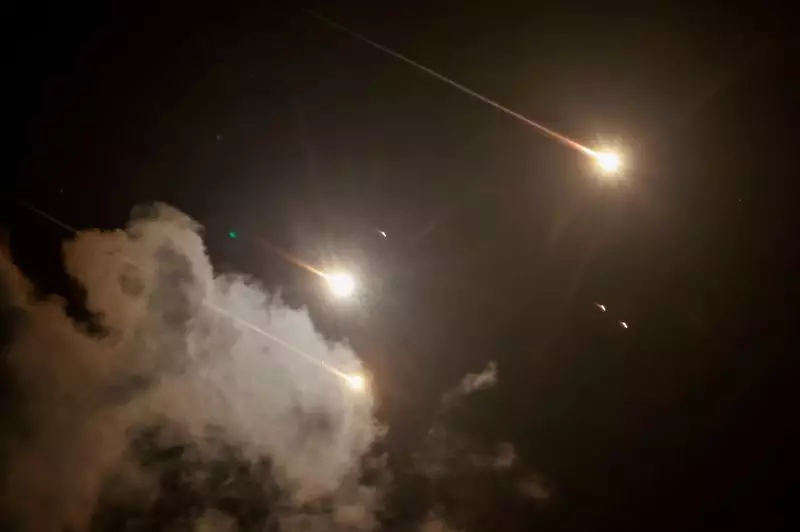The recent missile bombardments by Iran against Israel reveal significant insights into missile defense systems and the broader implications for potential conflicts in the Indo-Pacific region. While there are stark differences between the dynamics of Middle Eastern conflicts and one that could arise between the United States and China, the events of this month may provide crucial lessons. Analysts suggest that understanding these missile strikes can shape defense strategies and influence deterrence capabilities in response to evolving threats.
Iran’s missile activity showcases the effectiveness and challenges of missile defense systems currently in place. With nearly 400 missiles launched against Israel in 2023 alone, the scale and variety of threats present a testing ground for defensive strategies. Experts like Collin Koh from the S. Rajaratnam School of International Studies emphasize that lessons learned from these strikes could inform U.S. strategies in contending with a similarly hostile environment posed by China. As these missile incidents demonstrate, traditional reliance on deterrence through denials—hoping for effective defense systems to neutralize threats—may no longer suffice. Instead, a shift towards a strategy of deterrence through punishment might be necessary as nations adapt to new forms of warfare.
The missile strikes underscore a vital point: the United States and its allies must reassess their defense frameworks as they prepare for potential conflicts. This is especially pertinent in light of the technological advancements underpinning China’s military capabilities. While Iran’s strikes were significant, military planners in the U.S. must consider that Beijing’s missile technology is superior in terms of range and guidance precision.
The realities of defending against a missile attack in the Indo-Pacific differ considerably from those in the Middle East. The vast distances that characterize the Indo-Pacific region introduce unique challenges. The geographical spread of U.S. allies and military installations demands a more nuanced understanding of targeting capabilities. Analysts warn that while Iran’s missile systems have revealed vulnerabilities, China’s advanced weaponry, which includes maneuvering warheads and improved precision, could complicate interception efforts by U.S.-led missile defense systems.
This situation is compounded by the fact that the existing missile defense architecture in the Indo-Pacific—comprised of platforms like the Patriot, Terminal High Altitude Area Defense (THAAD), and Aegis systems—needs to adapt to handle larger assaults. Ankit Panda from the Carnegie Endowment for International Peace highlights the necessity for military planners to consider how offensive systems will interact with missile defense capabilities. Improved intelligence on performance can influence strategic decision-making, ideally reducing the potential for conflict escalation.
A closer examination of Iranian and Chinese missile systems sheds light on their distinct functionalities and strategic implications. Iran’s missile arsenal, including systems like the Fattah-1, is designed for short-range engagements with accuracy within tens of meters. Contrastingly, China’s DF-26 missile is a formidable force, with an estimated accuracy of around 150 meters. This latter system is capable of reaching critical targets, such as U.S. facilities in Guam, thereby posing a serious threat to U.S. military capabilities in the region.
The scale and coordination involved in potential Chinese missile attacks would vastly outperform that of Iran’s military capacity. Malcolm Davis, an analyst at the Australian Strategic Policy Institute, points to the importance of integrated warfare strategies that combine missile attacks with cyber and anti-satellite strikes. This multidimensional approach would likely overwhelm existing defensive systems, proving far more challenging than Iran’s isolated missile firings.
As the geopolitical landscape evolves, the U.S. must rethink its defensive strategies in the Indo-Pacific. The Iranian missile barrage serves as a wake-up call, emphasizing that simply enhancing missile defense capabilities may not be enough. Instead, national strategies need to encompass an integrated approach that balances offense and defense while taking into account the lessons learned from regional conflicts.
The missile exchanges between Iran and Israel offer critical insights into both the strengths and vulnerabilities of current missile defense frameworks. For the U.S. and its allies, understanding these lessons is vital for formulating effective strategies in the Indo-Pacific. As nations prepare for a future where missile threats are increasingly sophisticated, a comprehensive re-evaluation of deterrence strategies and defense capabilities will become paramount. The path forward will require innovative thinking and a willingness to adapt to an ever-changing security environment.

